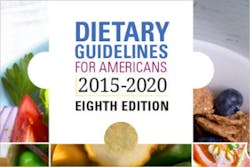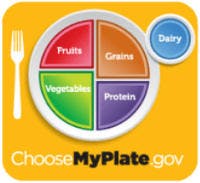Sugar coated: AHA throws support behind reducing added sugars
By Maria Perno Goldie, RDH, MS
The American Heart Association (AHA) recently released a scientific statement titled, “Added Sugars and Cardiovascular Disease Risk in Children.”(1) The authors conducted a literature review of original research and systematic studies on the connection between added sugar and risk factors for cardiovascular disease (CVD) in children and adolescents. Based on their review, the AHA supports decreased amounts of added sugar in the diets of children and adolescents. This article will review the theoretical basis for the statement.
The AHA scientific review examined the effect of sugar added to both food and beverages on CVD risk factors. They focused on the effect of sugar-sweetened beverages because these drinks contribute a significant number of calories to the American diet.(3,4) The AHA conservatively estimates that children between the ages of two and 19 consume 80 grams of sugar per day.(1) The review found that added sugars increase risk factors for CVD such as obesity, blood pressure, and cholesterol for all children and insulin-resistance in overweight children.
The AHA recommends that children and adolescents consume no more than 8 ounces of sugar-sweetened beverages and no more than 25 grams of added sugar per day.(1) They also suggest that parents and those taking care of infants and young children not add sugar to the diets of children under two-years-old. These precautions are necessary to reduce the risk for CVDs.
The Institute of Medicine published Accelerating Progress in Obesity Prevention: Solving the Weight of the Nation in 2011.(7) In addition to the general harmful health effects of sugar, the report mentions dental decay and erosion.
And lastly, there is evidence of wrongdoing on the part of sugar companies. Internal sugar industry documents, recently discovered by a researcher at the University of California, San Francisco, were published recently in the Journal of the American Medical Association (JAMA) Internal Medicine.(8) The allegations are that the sugar industry paid scientists in the 1960s to minimize the link between sugar and heart disease and promote saturated fat as the chief risk for many diseases. This is based on information in the documents that point to the Sugar Research Foundation, now called the Sugar Association, compensating three Harvard scientists about $50,000 to publish a 1967 review of research on sugar, fat, and heart disease. The study did not support the link between sugar and heart health, but did implicate saturated fat as the culprit.
For the most current dental headlines, click here.
References
- http://circ.ahajournals.org/content/early/2016/08/22/CIR.0000000000000439.
- http://www.who.int/mediacentre/factsheets/fs394/en/.
- https://www.cdc.gov/obesity/childhood/causes.html.
- www.cdc.gov/nccdphp/dnpa/nutrition/pdf/r2p_sweetend_beverages.pdf
- Kersh R, Stroup DF, Taylor WC. Childhood obesity: a framework for policy approaches and ethical considerations. Prev Chronic Dis 2011:8(5): A93. http://www.cdc.gov/pcd/issues/2011/sep/10_0273.htm. Accessed September 13, 2016.
- Ludwig DS, Peterson KE, Gortmaker SL. Relation between consumption of sugar-sweetened drinks and childhood obesity: a prospective, observational analysis. Lancet 2001;357(9255):505-8.
- IOM (Institute of Medicine). 2012. Accelerating Progress in Obesity Prevention: Solving the Weight of the Nation. Washington, DC: The National Academies Press.
- Kearns CE, Schmidt LA, and Glantz SA. Sugar Industry and Coronary Heart Disease Research. A Historical Analysis of Internal Industry Documents. JAMA Intern Med. Published online September 12, 2016. doi:10.1001/jamainternmed.2016.5394.
- U.S. Department of Health and Human Services and U.S. Department of Agriculture. 2015 – 2020 Dietary Guidelines for Americans. 8th Edition. December 2015. Available at http://health.gov/dietaryguidelines/2015/guidelines/.
- https://www.choosemyplate.gov/dietary-guidelines.




